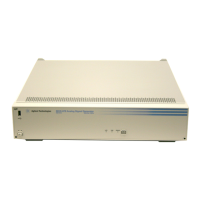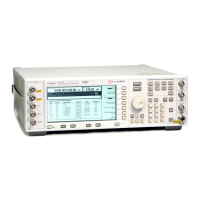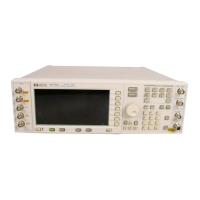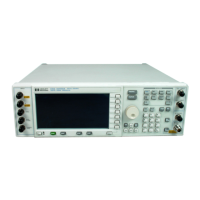144 Agilent N5181A/82A MXG Signal Generators SCPI Command Reference
Component Test Digital Commands
Dual ARB Subsystem–Option 651/652/654 ([:SOURce]:RADio[1]:ARB)
The signal generator reads the RMS value from the file header when real- time noise is enabled and
the dual ARB is turned on. If the value is unspecified, then it is calculated and stored in the header
automatically.
When the waveform file is saved from volatile waveform memory (WFM1) to non-volatile waveform
memory (NVWFM), the RMS value, auto- calculated or user- defined, is also saved.
For setting the header noise carrier RMS override value, see “:HEADER:NOISe:RMS[:OVERride]” on
page 143.
"<file_name>" This variable names the waveform file to which the RMS value will be applied.
The file name variable can designate a file in the WFM1, NVWFM, or SEQ
directories. For information on the file name syntax, refer to “File Name
Variables” on page 12.
<value> This variable is the user- measured RMS value for the specified waveform. The
following figure shows the RMS calculation.
UNSPecified Using this variable in the command clears the RMS value and sets it to
unspecified. An unspecified RMS value causes the signal generator to calculate the
value when the ARB personality is turned on. The RMS calculation includes
rise/fall times and does not include consecutive zero level samples. DC offsets and
noise are also included in the RMS measurement. Because the signal generator
calculation uses so many parameters, you may achieve better results calculating
your own RMS value.
Examples
[:SOURce]:RADio[1]:ARB:HEADER:RMS "WFM1:Sine_Wave",.835
The first example shows a user- measured RMS value for the Sine_Wave waveform file in the
waveform’s file header.
:RAD:ARB:HEADER:RMS "WFM1:Sine_Wave",UNSP
In the second example, the signal generator calculates the RMS value when the ARB is turned on
with this file selected or a sequence which contains the file selected.
The RMS value is expressed in volts.
Range 0 – 1.414213562373095
Key Entry Edit RMS Enter Unspecified Calculate
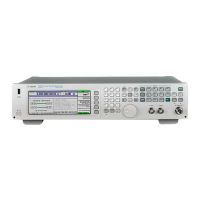
